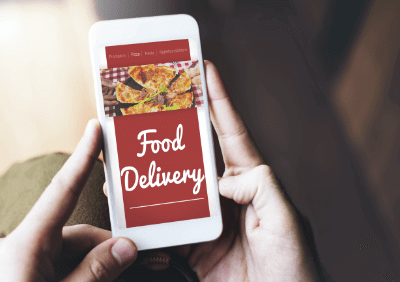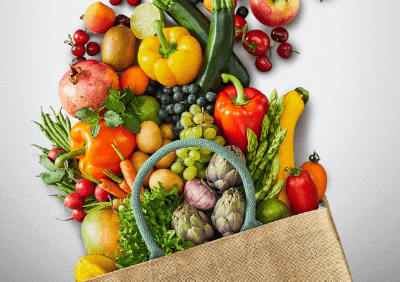Sustainable Packaging for Regulated Industries (Pharma, Food, FMCG)

Sustainable Packaging for Regulated Industries (Pharma, Food, FMCG)
Sustainable Solutions for the Pharma and Food Industries
Professionals in the pharma, food, and FMCG sectors understand better than anyone how packaging regulations apply in these fields. Recycling packaging materials won’t do the trick. Packaging must also consider shelf-life, safety, contamination control, and tampering. These considerations can lead compliance teams to conclude that sustainability is impossible to achieve.
However, industry leaders are successfully adopting sustainable packaging. They apply innovative strategies that comply with regulations while minimizing material misuse, waste, and costs.
The solution is integrating sustainability into the packaging design decision-making processes.
So what are the challenges?
Regulated industries must comply with strict packaging design rules; reckless and untested design changes may not be legal. Unavoidably, any design change must go through a sequential testing, approval, and certification process.
This doesn’t imply that change is impossible in the field. It emphasizes that innovation must be applied to legal compliance in these industries.
What are the additional barriers to sustainable packaging in these industries?
- The materials have to be food- or pharma-grade.
- Packaging has to hold up over time, often across extreme temperatures
- Labels need to be compliant and maintain readable and scannable attributes.
- Not compromising on child resistance and tamper evidence becomes difficult.
- Shelf life and barrier properties still need to be spot-on
So yes, it’s a bit more complex. But it’s not impossible. And it’s already happening.
Solutions Being Implemented by Smart Teams
1. Switching to the Right New Materials
You can’t hope for a positive outcome just by adding a biodegradable pouch. However, replacing legacy materials with newer, tested, and approved sustainable substitute materials is a viable option.
Many companies replace multilayer, unrecyclable films with mono-material recyclable films, and they also switch from polystyrene trays to molded pulp or fiber trays that are fully recyclable, equally protective, and pulp trays are fiber.
Bonus: many of these new materials weigh less, which cuts shipping costs without compromising performance.
2. They’re Rethinking Overengineering
In pharma and food, it’s common to go overboard “just to be safe.” Extra layers. Bigger boxes. More inserts. But much of that isn’t needed anymore thanks to better materials and smarter testing.
Right-sizing and revalidating existing packaging setups often reveals places to cut down on waste without touching the product experience or safety levels.
One FMCG brand shaved 12% off its packaging weight across five SKUs just by updating box sizes and removing unnecessary protection. Product integrity? Unchanged.
3. They’re Not Waiting for Suppliers to Pitch Ideas
The most proactive teams don’t wait around for a packaging supplier to offer the “green” version of what they already buy. They ask for it directly-or better yet, request multiple options.
Even better? They test a few materials every quarter, before they need to make a switch. So when a regulation tightens or a cost spike hits, they’re not scrambling-they’re already ahead.
4. They’ve Got a System for Compliance + Sustainability
This is key: sustainable packaging that doesn’t pass compliance checks is useless. The teams getting it right are baking sustainability into their QA and regulatory processes from day one.
So instead of fighting the system, they build it into the workflow-testing shelf life, barrier performance, and handling right alongside recyclability and materials sourcing.
That’s how you make sustainable packaging real-not just theoretical.
Real-World Examples? They’re Everywhere
- A global pharma company rolled out recyclable PET bottles for its OTC range-FDA compliant and curbside recyclable
- A food brand launched a full product line in compostable film that still meets moisture barrier requirements
- An FMCG player dropped plastic trays in favor of molded pulp across 70% of their portfolio-saving money and weight without needing revalidation
None of these brands started with a giant rebrand. They started with one SKU, ran the tests, validated it… then scaled.
A Few Practical Starting Points
Not sure where to begin? Start here:
Audit what you’re using today.
Figure out which materials are overengineered or outdated. There’s almost always room to trim.
Work with suppliers who know your industry.
Not just sustainability vendors-but partners who understand pharma, food safety, or FMCG needs inside and out.
Test a few new materials per year.
Make it part of the process. Don’t wait for a crisis to start looking.
Don’t go it alone.
Involve your regulatory, legal, and ops teams early so you’re not backtracking later.
The Bottom Line: You Don’t Have to Choose Between Safe and Sustainable
In regulated industries, packaging changes will always come with some red tape. But that’s no excuse to stand still. The tools, materials, and partners exist to make real improvements—without compromising compliance or product quality.
And the upside? It’s not just about sustainability. These changes usually lead to better efficiency, fewer returns, lower freight costs, and stronger brand perception.
So no, you don’t have to go “cheap.” Just smarter.
Packaging_Casestudy_Onlinecatering

Packaging_Casestudy_Onlinecatering
Securing the Freshness of Food On-The-Go for an Online Caterer through Technology EnablementRead More
Packaging_Casestudy_Onlinegrocery

Packaging_Casestudy_Onlinegrocery
Overhauling the Transit of Products for an Online Grocery Through Intelligent Packaging DesignRead More



